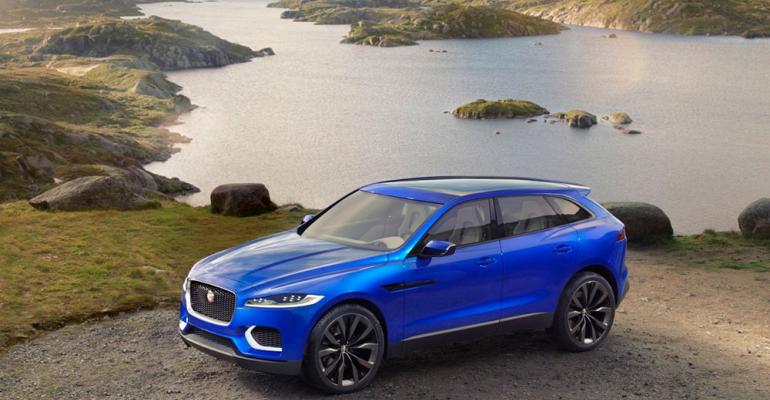DETROIT – Jaguar Land Rover posted impressive sales gains in 2013 and the British automaker hopes for more of the same this year.
Last year Land Rover’s U.S. sales rose 14.5% compared with 2012, while Jaguar’s skyrocketed 41.1% in the same period, according to WardsAuto data.
To facilitate further gains, the automaker is looking toward new products and expanding its manufacturing base, which now is largely limited to the U.K.
Two plants are in the works, one in China and the other Brazil, two countries JLR has targeted for growth.
The new facilities will help ease the order backlog on certain models, officials say.
“We can’t generate year-on-year sales increases without unlocking production constraints,” Andy Goss, group sales operations director-Jaguar Land Rover, tells WardsAuto. “We’ve been very good doing that, but it remains one of our biggest challenges going forward.”
The plant being built in Changshu, China, by JLR and its Chinese partner, Chery, will have a 130,000-unit annual capacity, while the facility in Rio de Janeiro will be able to build 24,000 vehicles per year.
Every product in Land Rover’s lineup, including the flagship Range Rover SUV and the sporty Evoque, currently has only a 19 days’ supply in the U.S., well below the industry average of 60, according to WardsAuto data.
Jaguar stock levels are healthy, if not a bit high, with the new F-Type convertible at 83 days’ supply and the XK sports car at 85.
Goss says JLR’s signature U.K. plants, in Solihull and Castle Bromwich, are running five days a week, 24 hours a day, with two down days for maintenance. Since 2011, JLR has added 9,000 new jobs in the U.K., including 6,000 manufacturing positions.
“We’re not resting on our laurels. We’re preparing for the future, particularly in terms of capital expenditure,” he says. “Our expectations are we will spend about $3.7 billion since separating from Ford (in 2008).”
All of the investment comes directly from revenue generated by JLR, not from Indian parent company Tata, Goss says. Tata, however, has given the green light for the heavy investments.
New products are key to future growth for JLR. Land Rover recently introduced a new Range Rover and Range Rover Sport, while Jaguar is preparing to launch the F-Type coupe.
Another key model for Jaguar will be the new midsize sports sedan due in 2015. Little has been revealed about the upcoming car, other than it will be based on the automaker’s new aluminum-vehicle architecture, which is expected to shave weight and improve performance.
“We’re very excited, because (the aluminum architecture) allows us to produce a sedan with refinement and capability that will be extremely competitive against the established German brands,” Goss says.
No other future products have been announced, but the executive says the automaker is studying potential “white space” vehicles that would fill a void in today’s market.
The Jaguar C-X17 CUV concept, shown at the Frankfurt auto show, eventually could make its way into production, although officials stress it remains only a concept at this point.
Goss says the C-X17 would not compete with Land Rover models.
“Clearly its forte would be on-road capability,” he says. “From a Jaguar perspective, people expect performance cars, and we wouldn’t move away from that particular tenant.”





